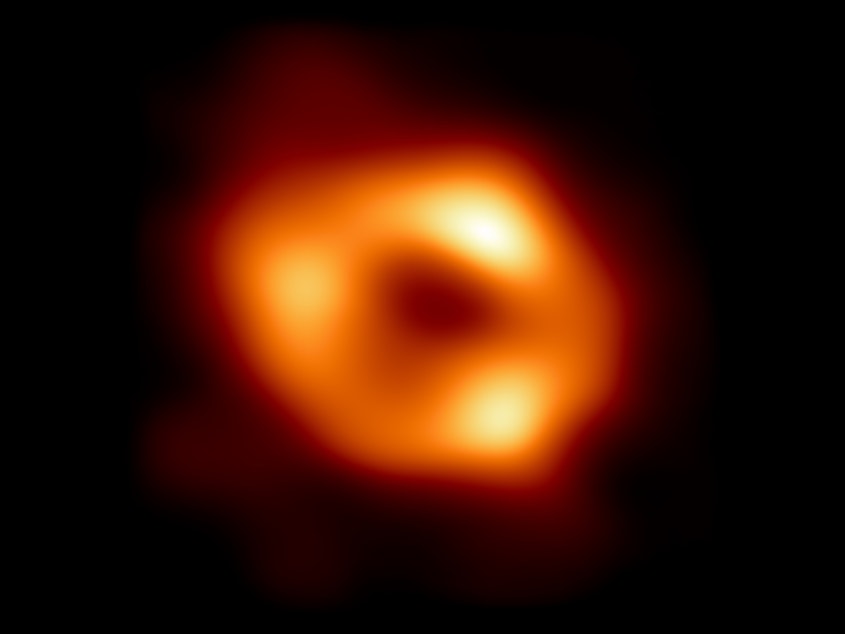This is the first image of the black hole at the heart of the Milky Way

For years, the supermassive black hole in the dark center of the Milky Way galaxy has been theorized about and studied — and finally, it's been captured in an image.
"We finally have the first look at our Milky Way black hole, Sagittarius A*," an international team of astrophysicists and researchers from the Event Horizon Telescope team announced on Thursday.
Updated May 12, 2022 at 10:01 AM ET
"It's the dawn of a new era of black hole physics," it added.
The black hole is often referred to as Sgr A*, pronounced sadge ay star. Its mass is about 4 million times that of the sun, and it's about 27,000 light years from Earth, according to MIT.
Sponsored
Black holes have long been a source of public fascination, but they also pose notorious challenges to researchers, mainly because their gravitational fields are so strong that they either bend light or prevent it from escaping entirely. But scientists have been able to detect and study them based on the powerful effects they exert on their surroundings. In the case of Sgr A*, scientists have previously observed stars orbiting around the Milky Way's center.
"Although we cannot see the black hole itself, because it is completely dark, glowing gas around it reveals a telltale signature: a dark central region (called a 'shadow') surrounded by a bright ring-like structure," the EHT team said in its announcement.
The researchers announced the news Thursday morning at the National Press Club in Washington, D.C., but it was simultaneously released around the world, in a series of news conferences held in Mexico City, Shanghai, Tokyo, and other cities.
"We were stunned by how well the size of the ring agreed with predictions from Einstein's Theory of General Relativity," said EHT Project Scientist Geoffrey Bower, from the Institute of Astronomy and Astrophysics at the Academia Sinica in Taipei.
The discovery comes three years after the Event Horizon Telescope Collaboration released the first-ever image of a black hole — but that work focused on the center of galaxy Messier 87, tens of millions of light-years away from Earth in the Virgo cluster of galaxies. [Copyright 2022 NPR]



